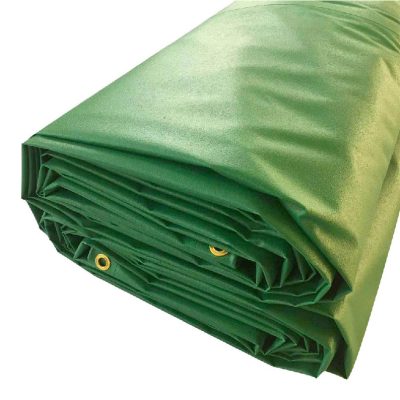Tarpaulins play a crucial role in disaster preparedness and response efforts. They are versatile, cost-effective, and readily available, making them essential tools for addressing various needs during and after natural or man-made disasters. Here are several ways in which tarpaulins are used in disaster preparedness and response:
- Emergency Shelter: Tarpaulins can be quickly deployed to create temporary emergency shelters for disaster survivors. They provide immediate protection from the elements, such as rain, sun, and wind, and can be used to construct simple tents or cover damaged roofs.
- Temporary Housing: In the aftermath of a disaster, when homes are damaged or destroyed, tarps can serve as temporary housing solutions. They provide a safe and dry place for families to stay until more permanent housing can be arranged.
- Protection from Exposure: Tarps are used to protect survivors from exposure to harsh weather conditions, which can lead to hypothermia, heatstroke, or other weather-related illnesses. They are particularly crucial in extreme weather events like hurricanes, floods, or earthquakes.
- Privacy and Dignity: Tarps are often used to create partitions or privacy screens in emergency shelters, helping to maintain the dignity and privacy of disaster survivors in crowded or makeshift living conditions.
- Medical Facilities: Tarps can be used to set up temporary medical facilities in disaster-affected areas. These facilities can provide basic medical care and serve as triage centers for injured individuals.
- Food Distribution: Tarps can be used to create temporary food distribution points or storage areas. They provide cover for food supplies and protect them from contamination.
- Water Collection: Tarps can be used to collect rainwater, providing a source of clean drinking water in disaster-affected areas where access to clean water is compromised.
- Transport and Logistics: Tarps are used to cover and protect relief supplies, equipment, and vehicles during transportation. They help keep essential items dry and secure.
- Repair and Reconstruction: Tarps can be used as temporary roofing solutions to cover damaged or missing roofs, preventing further water damage to homes and buildings. They buy time for more extensive repair and reconstruction efforts.
- Emergency Signage: Tarps can be used to create large, visible signage for information dissemination, directing people to evacuation centers, providing emergency contact information, or conveying safety instructions.
- Firefighting and Containment: In wildfire emergencies, tarps can be used to create firebreaks or barriers by covering vegetation or creating controlled burns to contain the fire’s spread.
- Search and Rescue: Tarps can be used to create stretchers for transporting injured individuals during search and rescue operations.
Effective disaster preparedness includes stockpiling tarps, along with other relief supplies, in disaster-prone areas. Having a readily available supply of tarps can significantly improve the response to emergencies and help mitigate the impact of disasters on affected communities. Additionally, training community members in tarpaulin use and basic shelter construction can enhance disaster resilience and preparedness at the local level.


















